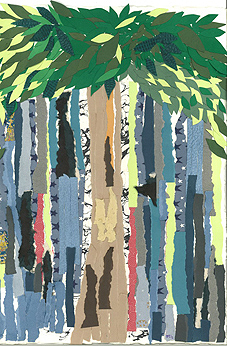The Fault Lines of Hindi and Urdu
Sanjay Kumar
With the adoption of the policy of replacing Persian with vernacular languages as the language of the lower court in November 1837, the British decided to replace Persian with Hindustanee in Persian script in the North Western Province, Bihar and Central India. Their intention was to promote the middle standard Hindustanee, as recommended by Gilchrist, comprehensible to common people, both Hindus and Muslims, but what this policy, in effect, resulted into was the use of a heavily Persianized Urdu, hardly distinguishable from Persian, in the name of Hindustanee since Perso- Arabic terminology of Persian remained intact with only Hindustanee verbs substituting Persian verbs. The patronage of this heavily Persianized Urdu as the language of administration had a three-fold consequence. One, majority of people who were familiar with Hindi in Nagari script were denied the opportunity of government employment. Two, the whole purpose of introducing vernacular as the language of the lower court and administration so as to make it comprehensible to people was defeated as a heavily Persianized Urdu continued to be used. Three, this led to a further dichotomization between Urdu and Hindi. The official patronage of Urdu created a sense of discontent among the emerging Hindi Vernacular elite and middle classes which led to a demand for introducing Nagari script as the court character (language). This demand was to develop into a full-scale agitation in the 1860s and onwards in which supporters of both Urdu and Hindi were to be aligned on opposite sides making claims and counterclaims in support of their respective languages. The real reason behind this agitation was the conflicting social, cultural, economic and political interests−of a newly emergent Hindi vernacular class, on the one hand, which demanded a share in the lower administration, and of the upper class Muslims with a handful of Hindus, mostly Kayasthas, on the other, who were loathe to let go off this privilege. Ostensibly, the controversy arose over the choice of script, but the issues involved were much deeper. As a subsequent turn of events reveals, the issue of script got intimately linked with those of language, identity and nation. In the process, the two scripts came to be associated not only with Urdu and Hindi respectively but also with the two religious communities, Muslims and Hindus. A new equation emerged: Persian/Nastalikh−Urdu−Muslim and Nagari−Hindi−Hindu. This newly invented equation which conflated script and language (linguistic identity) with religious identity was seized and subsequently expanded by the later day cultural/religious nationalists, Hindu as well as Muslim, into constructing separate and exclusive national identities which would seal the fate of the nation, dividing it into a Muslim Pakistan and a largely Hindu India. The Hindu nationalists increasingly viewed themselves as the original inhabitants of the nation and thus its true inheritors. As an extension of this logic, tracing a direct line of descent from Devbhasa Sanskrit they claimed ’pure’ Hindi as their true language which was contaminated with Arabic and Persian words due to the presence of Muslims on the Indian soil who were now seen as invaders and usurpers of the true national heritage; hence, the need for restoring the pure Hindi to its true national status by purging and excising it of all foreign influences. Similarly, a true national literature was to be created which would act as the sure and secure foundation of a true national culture through which the nation could attain the highest social and cultural ideals of its existence. If this was the claim preferred by the Hindu nationalists (they were mostly upper-class-upper-caste Hindi vernacular elite), then the Muslims, on the other hand, contended that they were a separate race and nation with their own national language and literature. It was in this increasingly shrill climate of competing nationalisms that Hindi and Urdu got split along religious lines with Hindi in the Nagari script getting identified with the Hindus, and Urdu in Persian script getting identified with the Muslims. They would then set about inventing two separate linguistic and literary pasts in complete disregard of the prevailing linguistic situation in which there was a significant overlap of complexly interwoven linguistic and literary traditions. Pages 1 2 3 4 5 6 7 8 |
Essays in this Forum
Rethinking the Global South
by Mukoma Wa Ngugi From Indian Literature to World Literature: A Conversation with Satya P. Mohanty by Rashmi Dube Bhatnagar and Rajender Kaur Asia in My Life by Ngugi wa Thiong'o The Global South and Cultural Struggles: On the Afro-Asian People’s Solidarity Organization by Duncan Mceachern Yoon The Fault Lines of Hindi and Urdu by Sanjay Kumar Reframing Colonialism and Modernity: An Endeavour through Sociology and Literature by Gurminder K. Bhambra Varieties of Cultural Chauvinism and the Relevance of Comparative Studies by Tilottoma Misra Literature to Combat Cultural Chauvinism: A Response by Shivani Jha Is There an Indian Way of Thinking about Comparative Literature? by E. V. Ramakrishnan Modernity and Public Sphere in Vernacular by Purushottam Agrawal West Indian Writers and Cultural Chauvinism by Jerome Teelucksingh Oral Knowledge in Berber Women’s Expressions of the Sacred by Fatima Sadiki |
